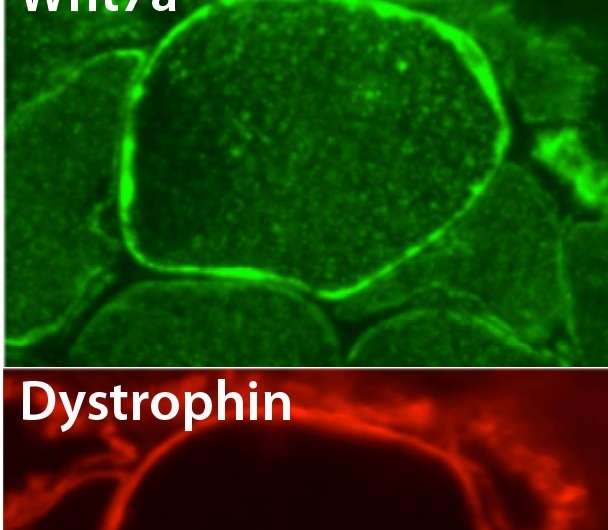Differences in how ALS affects eye and limb muscles act as clue

In an effort to better understand what happens during Amyotrophic Lateral Sclerosis (ALS), researchers at Umeå University in Sweden have compared the impact of ALS on the eye and limb muscles. They have focused on specific proteins that are important for muscle-nerve contacts. The eye muscles appear to be better equipped to maintain their muscle-nerve contacts and are thereby less affected.
"While skeletal muscles are severely affected in ALS, eye muscles are far less affected than limb muscles. In our research, we have been looking at why," says Vahid M. Harandi, doctoral student at the Department of Integrative Medical Biology and the Department of Clinical Sciences, Ophthalmology. "What we found were intrinsic differences between limb and eye muscles regarding expression of certain signal proteins involved in the development and vitality of neurons. These differences, together with the fact that the neuromuscular junctions of eye muscles seem better able to preserve these signal proteins, known as neurotrophic factors, might play a role in the preservation of eye muscle function during ALS."
ALS is typically a late-onset neurodegenerative disease, leading to progressive muscle wasting, speech and swallowing difficulties. Death typically occurs within 3 to 5 years of symptom onset, mainly due to respiratory failure. In Sweden, the average number of new cases of ALS per year is 2.4 per 100,000 inhabitants but due to the short duration of the disease there are approximately 6-9 patients with ALS per 100,000 inhabitants, at any time.
The overall objective of Vahid M. Harandi's research was to explore how ALS develops (pathophysiologically) from a muscle perspective. In his research, Vahid M. Harandi has focused on the expression and distribution of key neurotrophic factors and so-called Wnt proteins in eye and limb muscles. He has investigated how possible changes might be related both to ALS and ageing. Both neurotrophic factors and Wnt protein alterations have been implicated in several neuromuscular and neurological diseases, including ALS.
"ALS has traditionally been considered as primarily a motor neuron disease. However, accumulating data indicates that loss of contact between the nerve axons and the muscle fibres occurs early, long before the death of motor neurons," explains Vahid M. Harandi. "This means that muscle fibres may be what's initiating the motor neuron degeneration. These findings have led to a changing focus in ALS research from motor neurons alone to also include the muscle fibres and the neuromuscular junctions."
More information: umu.diva-portal.org/smash/record.jsf?pid=diva2%3A927262&dswid=newPopUp


















